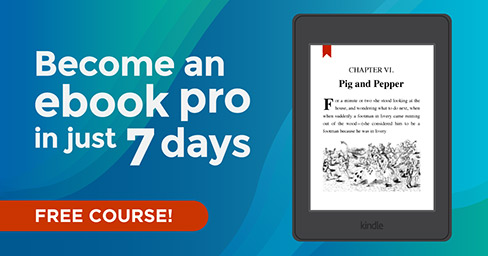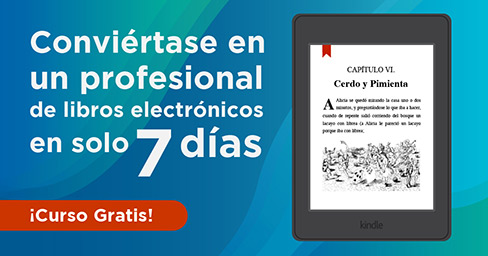6 Tips to Write a Compelling Explainer Video Script
It goes without saying that videos have taken over the internet by a storm. You don’t just see them on Youtube anymore— they’re everywhere. Chances are when you open your Instagram or Facebook, you’ll be greeted with at least one video. Not only that, but according to Ahrefs, thousands of people search for keywords such as “video marketing”, “make a video”, “video ads on Facebook” on a monthly basis. Search results with videos are more likely to be clicked on compared to the typical results with text. Also, pages that include a video are 53 times more likely to be clicked on than those without. Due to their effectiveness, marketers have included an explainer video in their content marketing strategy.

In addition to that, the audience for videos is growing each year. Around 45% of users watch at least an hour or more of video each day. In fact, Facebook alone has 8 billion views every day. Videos are also shareable. They’re constantly being shared across social media. Compared to reading, videos are much more digestible for learning new things. Although some people might prefer to read their information, there are also people who prefer to consume information with visuals. Overall, videos are great for conveying complex information in a digestible format.
What makes explainer videos memorable is the story. A video can have amazing visuals and audio but without a good story and a solid script, it’s not going to do much. Getting the story right isn’t an easy task but it’s not impossible either. Here are six tips to help you create a compelling script for your videos:
1. Keep your explainer video short
In the age of instant gratification, no one has time to watch a 10-minute video. When writing a script for an explainer video, keep in mind that it should be short. The longer the script is, the less impact it will have. Explainer videos are rarely long and winding. They are usually between 30 seconds and 3 minutes and no longer than that. If you’re having trouble figuring out how many words that is, keep your word count to 130-150 words a minute.
When you’ve written your script, record the time and read your script aloud. Make sure you’re not rushing, and you’re reading at a comfortable pace. Sometimes we tend to read faster than the proper pace. There are also various tools online that can check your script’s reading time.
However, that doesn’t mean you should keep your script short if you want to explain something that takes time. In the end, the length of your script depends solely on the audience. If your video is going to be played in an auditorium, you might be able to get away with more than 5 minutes of video. On the Internet, you might have to stick to a maximum of 3 minutes before your visitor gets bored and exits your page.
2. Clarify your message in the first 30 seconds
Brevity is key, so don’t waste your audience’s time. Got a long message? Try to reduce it to one sentence and put it in the first thirty seconds of the video. This benefits both the audience and you. You won’t be wasting their time, and your message will be known from the start. Attention spans are becoming shorter and shorter as we speak. So, putting your message at the beginning of the video will compel your audience to listen to what you have to say.
Explainer videos are meant to be pretty short. Shortening your message and relaying it at the beginning of the video is necessary if you want your audience to stay engaged. Remember to keep your message simple as well. Forget about explaining everything because it’s just going to confuse the audience. Get straight to the point and take time to figure out what you think is worth putting in the video and what’s not.
Don’t worry about not having enough time to explain to your audience the perks and features of your product or service— you’ll have time to do this later. The first thing you want to do is reel viewers in, keep them engaged, and lead them to your site. The site will provide all the details you wanted to squeeze in the video earlier.
3. Your audience is your focus
When making an explainer video script, your main focus should be the audience. After all, they’re the ones who are going to watch it. So, focus on their questions and what they want to gain from watching your video.
Don’t try to sell your audience anything. Instead, make them understand that you have a solution to their problem. Being too salesmen like will chase your potential customers away. Giving them valuable information will help them gain trust in your brand, making them potential leads. If your script talks about your brand’s features most of the time and forgets about the audience’s problems, you might lose your viewers. In short, the solution for the audience should be a top priority of the explainer video.
Another way to put your audience first is to use personal pronouns such as “you” and “your”. This will make them feel included. Another way to keep your audience engaged is by showing things that resonate with them. This should be something they care deeply about. Make a script that’s conversational, not a company profile. Fitting in your brand’s “About Us” page in your explainer video won’t gain you any viewers.
4. Use emotion
Imagine an explainer video that sounds robotic and doesn’t speak to you— it’s boring. When creating your explainer video script, keep your audience’s emotions in mind. The end goal is to keep them engaged long enough to visit your site. You can do this by tugging on your viewers’ heartstrings— make them laugh or cry; either way you want them to respond to your explainer video. Again, what matters is the story. Things like language, anecdotes, statistics, or tone matter and can help you elicit an emotional response from your audience.
People want to connect with your brand, and one of the ways to do that is to use your brand voice and showcase your personality. Write a script that’s conversational, approachable and makes your audience feel like they’re listening to a friend and not a TV commercial.
5. Adjust for voice-over
When we write, we tend to forget what it’s going to sound like when it’s read out loud. Writing a great blog post won’t necessarily translate well on video. For example, using big words in your writing might look right but using complex words on video can have the opposite effect.
The key is to make the script flow and the language used should roll off the tongue. Although voice-over artists might be pros, complicated words in the script might sound awkward and clunky. Stick to a simple, conversational style that’s natural and easy on the ears. When writing your script, feel free to use editing apps such as the Hemingway App that helps make writing more simple and helps you eliminate unnecessary words.
6. Have a clear call-to-action
This last tip is the most important of them all. Don’t forget to include a clear call-to-action in your script. A call-to-action is what you want your audience to do after they watch your video. Your call-to-action can tell them to download a free demo, an ebook, or try a free trial from your brand. However, avoid beating around the bush and make your message very direct.
Avoid adding multiple calls-to-action in one video. Stick to one and make sure it gets the point across. More than one call-to-action can confuse the audience and you might end up with no one doing what you want them to do. If you have several different calls-to-action, you can make different versions of the video and use different ones each time. You can use the videos and test which ones have the best response.
Conclusion
Although all videos are awesome visual aids for conveying information, explainer videos are especially good for businesses because they’re excellent at story-telling. Because of this, we can see a lot of companies have invested in explainer videos to help reach their target audience. Explainer videos are memorable because they use illustrative aspects and have a storyline people can follow, making them easy to remember. Marketers have caught on to this and have implemented story-telling explainer videos to attract the audience and keep them engaged.
Now that you have an idea of what makes a compelling explainer video script, you’re one step ahead in getting started on that draft. Looking for more tips on how to create the perfect script for that explainer video? Scroll down below and get some more tips from this infographic BreadnBeyond whipped up.
Read more here.
6 Health Problems Common with Writers








